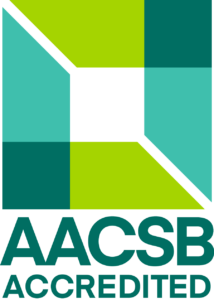Geomarketing
- Credits: 10
- Ending: Examination
- Range: 16sP
- Semester: winter
- Year: 2
- Faculty of Commerce
Teachers
Included in study programs
Teaching results
To introduce students to a new field - geomarketing, which is focused on planning and implementing marketing activities focused on specific customer requirements. Graduates will become familiar with the characteristics of geomarketing, customer spatial behavior in the territory and the use of geographic information systems.
Knowledge: to understand the issues of geomarketing, its meaning, essence and principles, to understand its application in marketing management.
Competencies: the ability to work with information - to search for it, select it, independently analyze and synthesize it with orientation; the ability to independently apply the principles and functions of geographic information systems.
Skills: the ability to verify and evaluate the use of theoretical approaches to the localization of business operations in the activities of business entities; the ability to apply, critically evaluate the situation in managing the assortment of a store, to propose solutions to problems at the tactical and strategic levels.
Indicative content
Theoretical approaches to space. Business models in retail. Consumption and its trends. Spatial consumer behavior. GIS-analysis of geographic data. Marketing management and geographic information. Store localization. Practical aspects of geomarketing.
Support literature
1. Wang, S.; Du, P. 2021. Retail geography. Routledge.
2. Jennifer Ann Brown, Alexa R. Ferdinands, Rachel Prowse, Darcy Reynard, Kim D. Raine, Candace I.J. Nykiforuk. Seeing the food swamp for the weeds: Moving beyond food retail mix in evaluating young people's food environments. SSM - Population Health. Volume 14, 2021, 100803. https://doi.org/10.1016/j.ssmph.2021.100803
3. Cong Tran, Dung D. Vu, Won-Yong Shin. An improved approach for estimating social POIboundaries with textual attributes on social media. Knowledge-Based Systems. Volume 213, 2021, 106710. https://doi.org/10.1016/j.knosys.2020.106710
Syllabus
1. Theoretical approaches to space. The benefits of geography for marketing. Overview of theoretical views on the issue of space and the location of stores. Sociology and space. Spatial aspects of the relationship between an individual and the territory. 2. Business models in retail. Business models in retail: definition, elements. Factors influencing changes in business models. Types of business models. New tasks for retailers. 3. Consumption and its trends. Consumption theory. Geography of consumption. Consumer and geography 4. Spatial behavior of the consumer. Observation of spatial behavior. Gravity modelsmanagement of the flow of consumers in the store. 5. GIS-analysis of geographic data Stages of geomarketing application in the enterprise. Analysis of geographic data. Geomarketing tools. Geocoding of address points 6. Marketing management and geographic information. Price, marketing communication, product, direct marketing, geo-merchandising. 7. Store location. Indicators of store location. Retail location type. Market coverage. Market analysis of the store in a given location 8. Practical aspects of geomarketing. Case study of locating a new store.
Requirements to complete the course
- 40% - semester seminar project
- 60% - written exam
Student workload
- Workload: 260 hours
- Attendance at lectures: 16 hours
- Preparation of literary research: 84 hours
- Processing of the semester project: 60 hours
- Exam preparation: 100 hours
Language whose command is required to complete the course
Slovak, English
Date of approval: 06.03.2024
Date of the latest change: 24.03.2025

